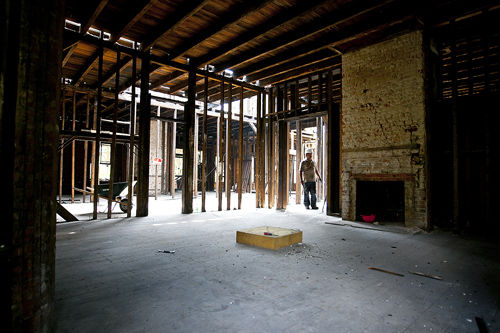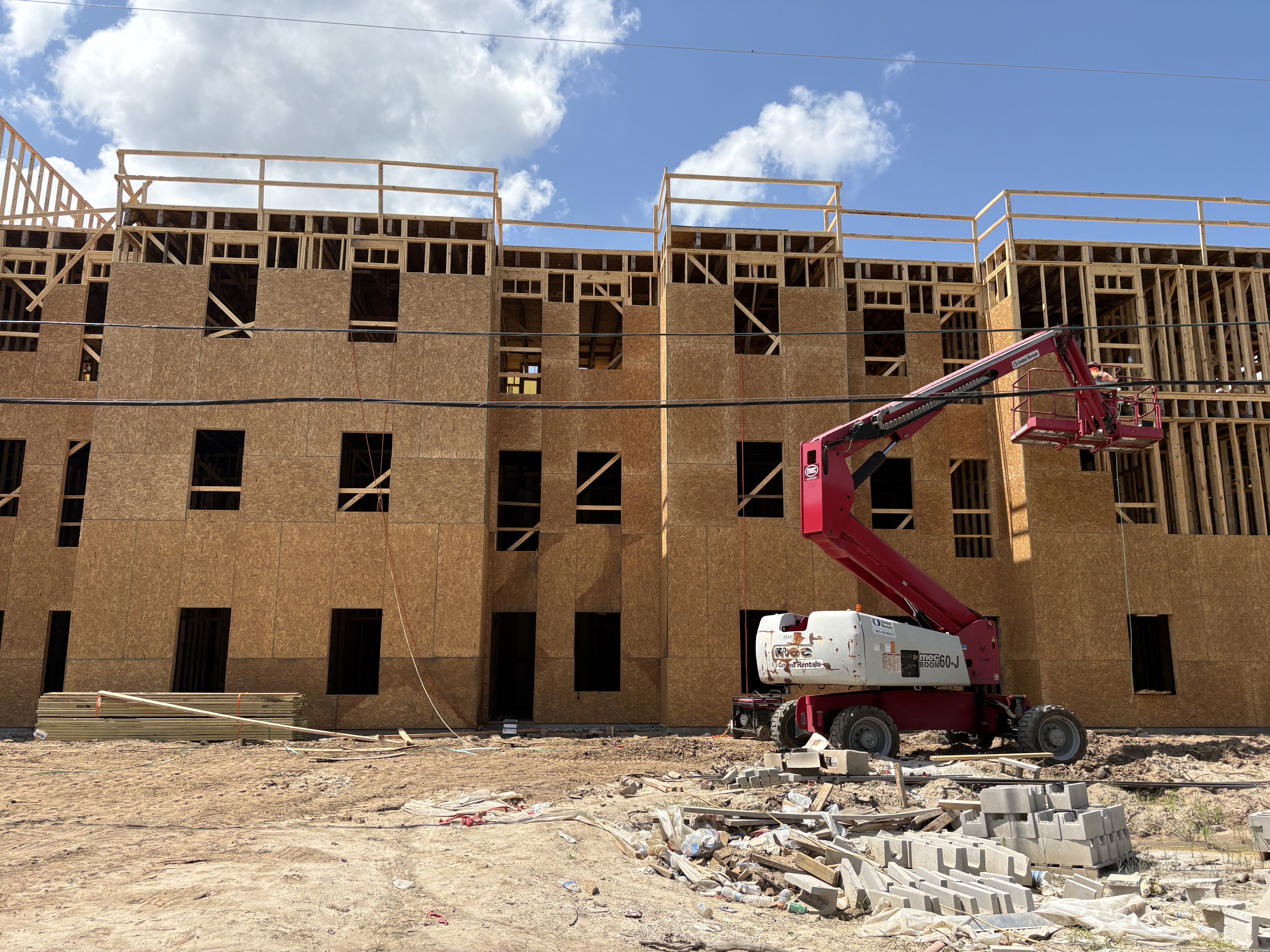Roberts House rises from the ashes
Published 10:00 am Thursday, September 1, 2011

- Here is a view of the front parlor on the Roberts House’s first floor.
“Some people wished to tear it down,” says Tom Haller as he stands in the gutted shell of the Roberts House. “I would have agreed had it been any other house. But not this house.”
As the president of the Valdosta Heritage Foundation, Haller is overseeing the resurrection of the Roberts House, Valdosta’s oldest home. The Heritage Foundation spent years refurbishing the historic landmark. By last year, the organization had placed its offices in the Roberts House and had started leasing the house for weddings, receptions and other social occasions.
Haller took office as president on a Friday in January. By the next Wednesday, the Roberts House had been heavily damaged, some would say destroyed, by fire.
The Heritage Foundation debated the Roberts House’s fate. Would the group demolish the remains or build from the ashes? The group voted to rebuild.
Crews Engineering performed a structural assessment on what remained of the building. To the Heritage Foundation’s surprise, Crews found much of what remained could be saved.
Walking through the building, Haller points to wall frames, original flooring on the first and second floors that has been saved. A kitchen fireplace has been removed but, with proper support, the house’s other chimneys and fireplaces will be salvaged. Some walls remain intact and will stay. Doors, mantels, window frames, crown molding, wainscoting, lumber and other interior trim have been saved for use in the rebuild. Crews Engineering also serves as the construction management for the project.
Last week, a crew began demolition work on the Roberts House, saving what is salvageable, throwing away what is not. This demolition work is expected to be finished by the weekend, Haller says. Framing should begin next week.
In the rebuild’s Phase I, the Heritage Foundation plans to frame, replace the roof, doors, exterior walls, etc., so that the structure is safely sealed from the elements. There is no time frame on the project, but Haller estimates the first phase will be completed before year’s end.
“When the first phase is done, from the exterior, it will look like it did before the fire,” Haller says.
Then, the Heritage Foundation will begin the slow meticulous process of rebuilding the interior, everything from plumbing to wiring, to re-constructing the destroyed stair case, to replacing walls, etc.
Though his term lasts only a year, Haller has a good view of the reconstruction. He lives right across the street. Haller can watch the progress from his yard or porch much as the legend has J.T. Roberts stepping onto the Roberts’ house balcony to view the progress of Valdosta in the late 1800s and early 1900s.
In 1840, 20 years before there would be a Valdosta, a man named William E. Wisenbaker settled on a large tract of land in Lowndes County. In 1845, the Wisenbakers built their house.
At that time, Troupville was the Lowndes County seat. By the late 1850s, a railroad was being built from Savannah to Montgomery. Tracks would pass through Lowndes County but not through Troupville. Instead, the railroad would be four miles east of Troupville.
Lowndes County wished to move its county seat closer to the railroad. In 1859, Wisenbaker sold 125 acres of his property to the Lowndes County Commission. These 125 acres became Valdosta, which was incorporated Dec. 7, 1860.
“This may be the most important event in Lowndes history,” according to the Valdosta Heritage Foundation.
In 1863, Wisenbaker sold the house to J.W. Wells, a businessman and Valdosta mayor, for whom Wells Street is named.
In 1891, Wells sold the land to John Taylor Roberts. He “was a successful businessman and political leader serving in city government as councilman and mayor from 1892-1914, a prosperous period in the history of Valdosta,” according to the Heritage Foundation.
Though called the Roberts House, its full name is the Wisenbaker-Wells-Roberts House.





